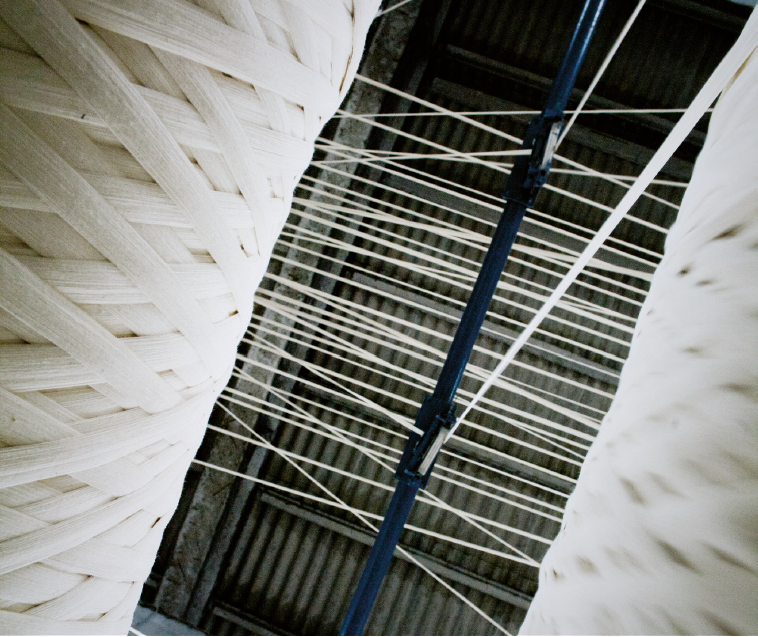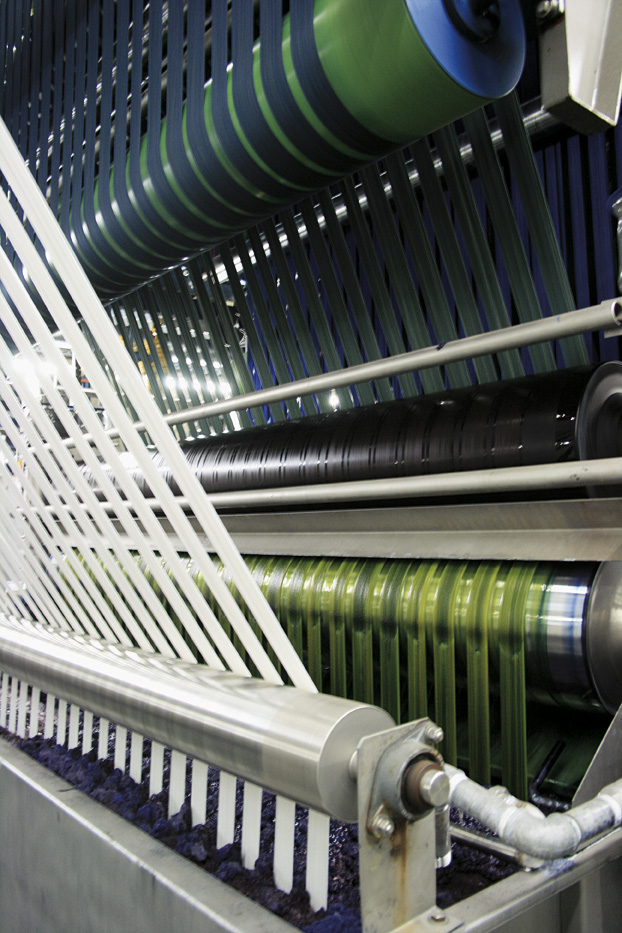Spinning.
The quality of the cotton, something that does not necessarily depend on whether or not it is organic, is also a vital factor in the spinning process, when the textile fibers are transformed into the yarn that will subsequently be woven. In the specific case of cotton which is a discontinuous natural fiber, before spinning can take place, a number of operations must be performed to clean the clumps of cotton of any vegetable resides remaining after the bols have been harvested and to make the fibers run parallel to form continuous threads. Spinning involves twisting a bundle of fibers to compact them into a continuous thread. Spinning can be performed on open-end machines, a more economical process yielding a lower quality result, in which the fibers are twisted by a centrifugal action generated by a rotor. Alternatively, the ring spinning method can be used, producing stronger, more compact yarn, in which the fibers are twisted by winding them around a rotating spindle. The spun yarn is given a name, or “count”, expressed as the weight to length ratio, which depends on the quantity of fibers used, their specific properties and the torsion to which they have been subjected.

Dyeing
Classic denim fabric consists of a warp, dyed indigo, and a colorless weft. Indigo was originally a vegetable dye, but today it is a synthetic product. Indigo dye is able to cling to the outside of the cotton yarn while leaving the inside white. This property is the basis for all the localized fading effects the washing process produces on the finished garment. Provided they maintain the concept of coloring only the warp, other types of dyes can be used, for example sulphur-based colorants, or the new formulas developed by Archroma.

(Article taken from “Bluemasters: Innovation In Denim” | Menabò Publishing | Promoted by ISKO™ and Archroma | 2014)